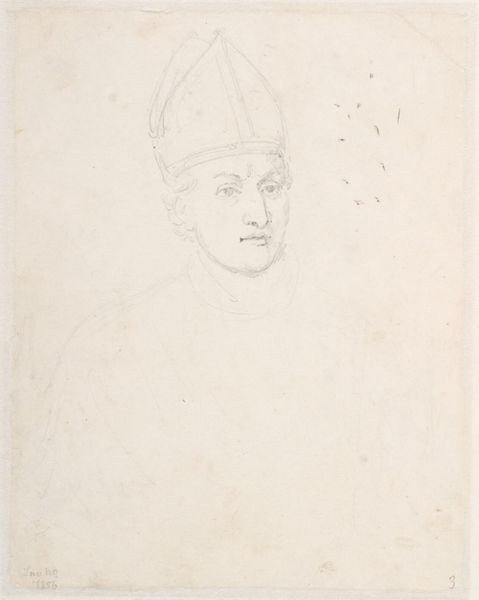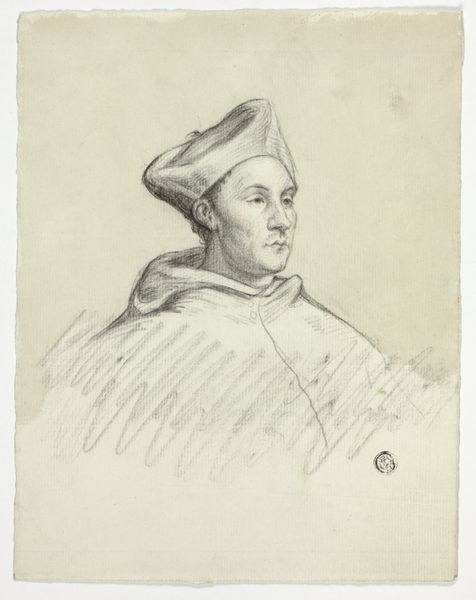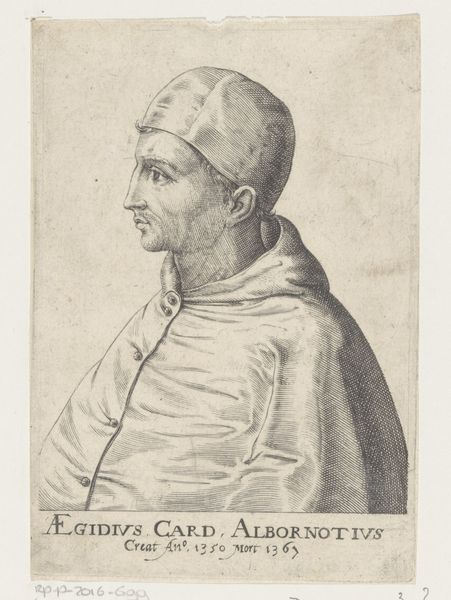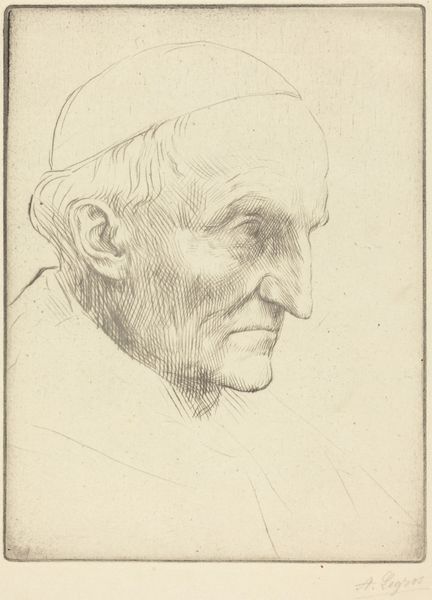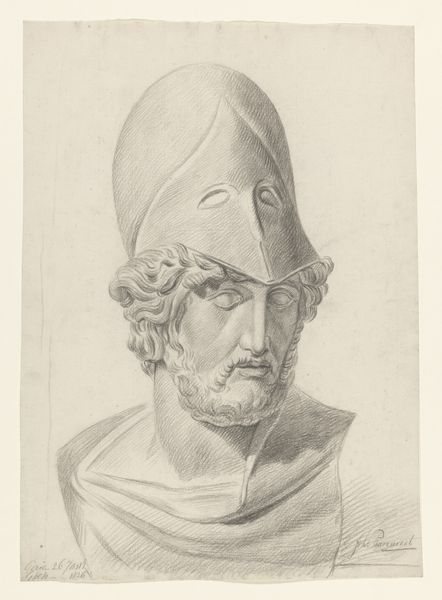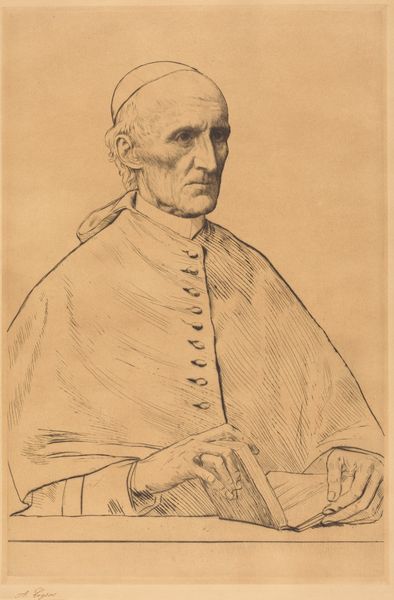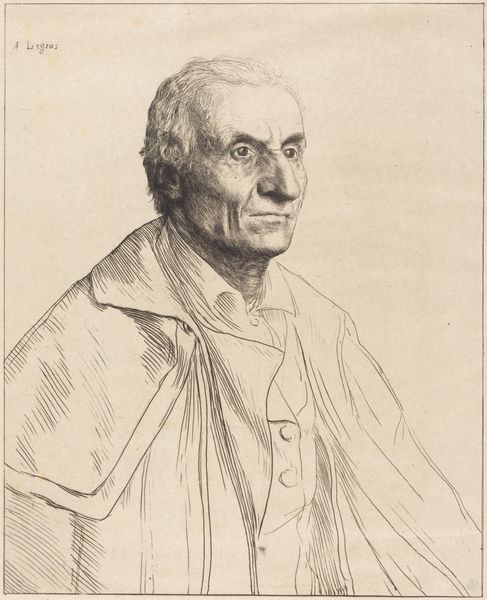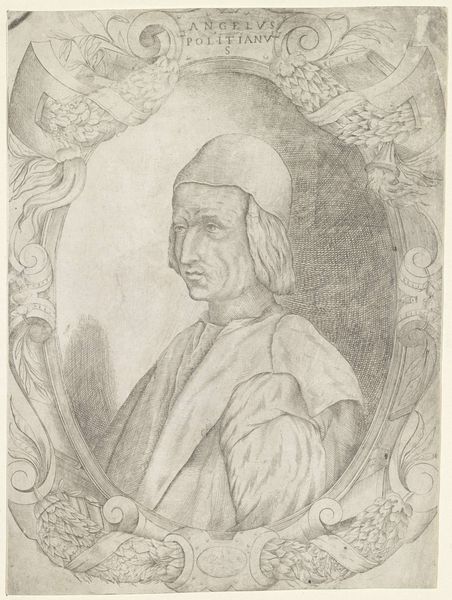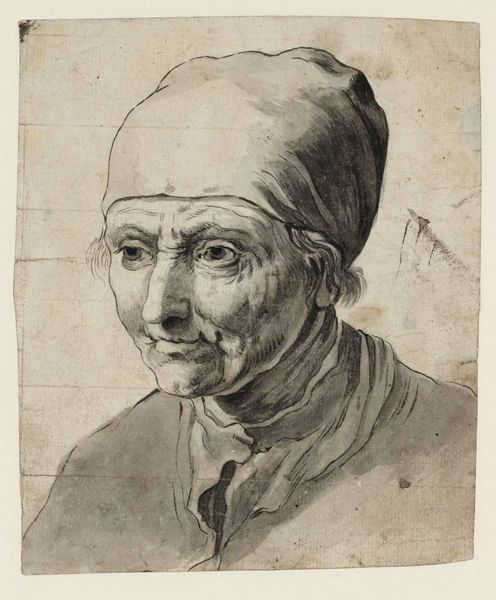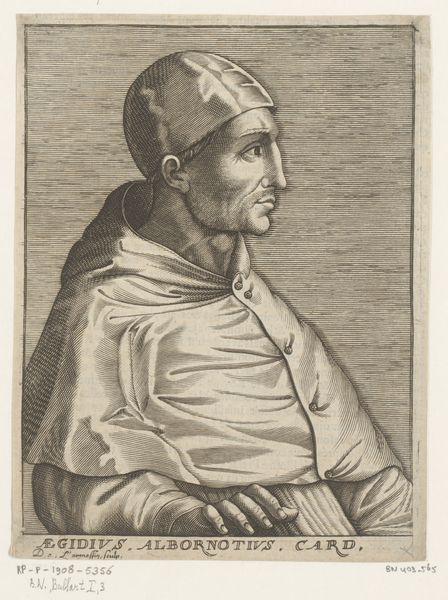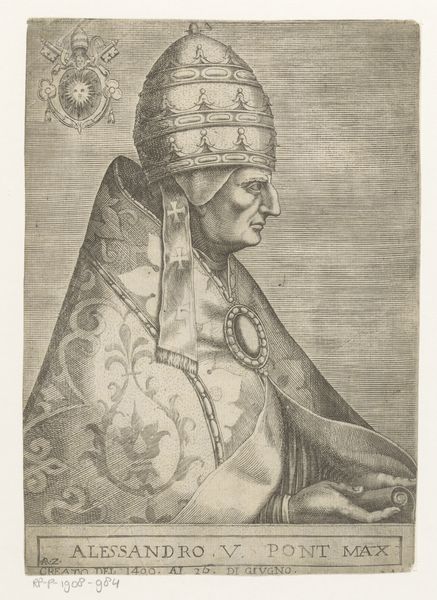
Copyright: Public Domain
Curator: Moritz Daniel Oppenheim created this pencil drawing, "Papst Gregor der Große aus Raffaels Disputa," sometime between 1821 and 1823. It currently resides here at the Städel Museum. Editor: It's amazing how much presence he achieves with just pencil lines. There's a real gravity in the subject's expression and in the formality of the rendering, despite the softness of the medium. Curator: It's tempting to read the drawing simply as a portrait of Pope Gregory the Great, but considering it's derived from Raphael's "Disputa," its purpose seems more about understanding art's methods than immortalizing its subject. The marks reveal a deliberate process of close looking and exact, yet rudimentary copying. Editor: Indeed, Gregory's tiara becomes a fascinating subject in itself, doesn't it? Note the trefoil decorations, repeated across the crown. In iconography, trefoils have a loaded and lasting legacy in Christian art—symbols for the Holy Trinity that become both devotional emblems and potent assertions of religious authority. Curator: And note the way the lines stop and start! He doesn’t fully commit to depicting all the ornaments on the tiara, but just gives enough clues for the viewer to imagine the whole. Oppenheim is grappling not only with reproducing form and also all the conventions related to papal visual representation. Editor: The slight turn of his head feels significant. It humanizes a figure so often depicted frontally, almost forcing direct engagement with the divine. It introduces an element of vulnerability. Curator: The context is crucial here. In the early 19th century, there was burgeoning interest in historical painting. Replicating details of older works can be viewed as the artist's labor; this process of copying offered an artistic education, while asserting one's commitment to a style, to the market, and one's cultural allegiance. Editor: The artwork definitely brings the legacy of Renaissance Papal imagery into the artist’s period. Even the subtle shading gives dimension, embodying the complex layers of power inherent in such symbolism. Curator: Indeed, approaching this study, as labor makes the end result more compelling, the context is essential to appreciating this quiet artwork. Editor: Ultimately, the symbolic gravity Oppenheim captured feels powerfully present.
Comments
No comments
Be the first to comment and join the conversation on the ultimate creative platform.
